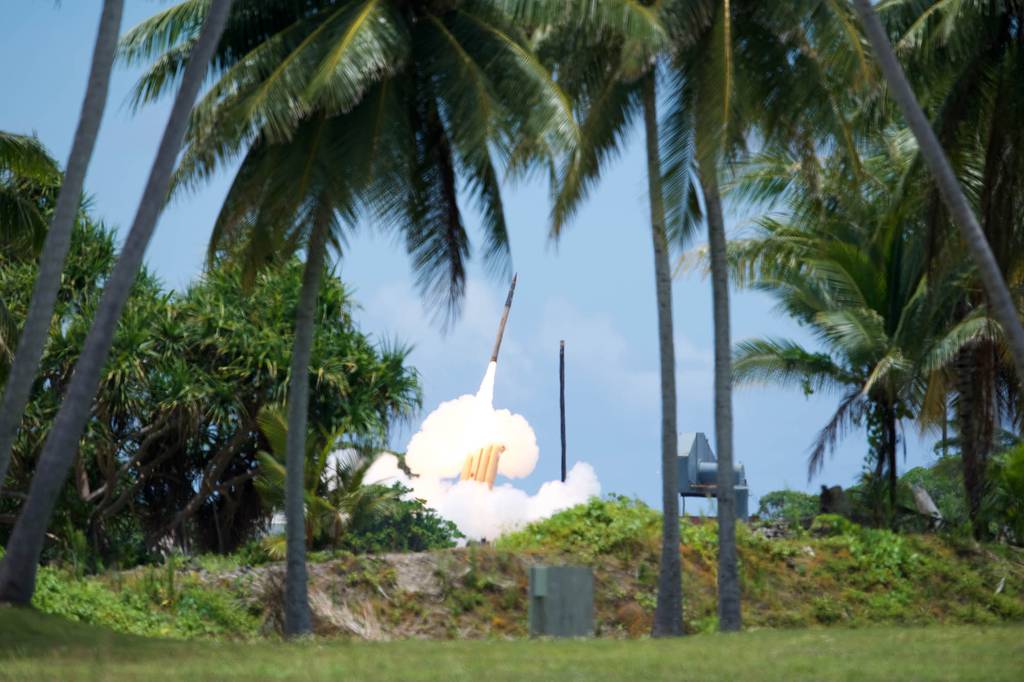
The U.S. Army plans to test this month whether its key command-and-control system can operate its Terminal High Altitude Area Defense System, according to the service’s lead on air and missile defense modernization.
The Army originally developed the Integrated Battle Command System as the brains of a future air and missile defense system, intending to link it with a new 360-degree radar and potentially new launchers in order to replace the aging Patriot air- defense system component by component.
“When we look at our prioritization of capabilities that we want to integrate on the IBCS, THAAD is right there currently listed as a priority. I won’t get into where in the priority list, but it is absolutely there,” Col. William Parker told Defense News in a recent interview.
As part of the Army’s effort to connect a web of sensors and shooters on the battlefield, it spent more than a decade developing IBCS to work with radars like the Sentinel A4, Patriot, Lower Tier Air and Missile Defense Sensor and the Indirect Fires Protection Capability. The latter, which is still under development, is expected to be capable of defeating rockets, artillery, mortars, cruise missiles and drones.
IBCS experienced years of delays related to its increasing mission sets and technical problems in an initial 2016 limited-user test. The Army spent years ironing out software issues through follow-on user tests. The service held an initial operational test and evaluation in 2022 and declared it fully operationally capable in the spring of 2023.
The Army will hold a full operational test and evaluation for IBCS in the fourth quarter of fiscal 2024 and plans to field the capability to the first unit around the middle of fiscal 2025, Parker said.
Now that IBCS has cleared a variety of hurdles, Parker’s outfit — the Air and Missile Defense Cross-Functional Team, which is part of Army Futures Command — is working to integrate the command-and-control technology with a number of other systems, including THAAD.
The cross-functional team is scheduled to experiment with that integration at Project Convergence, which kicks off Feb. 23 and will run through mid-March. Project Convergence is a campaign of learning where the joint force experiments with capabilities it envisions needing against high-end threats and advanced adversaries.
The key effort is centered around joint integration of sensors and shooters, and the Army will push data through IBCS over to THAAD’s command and control in order to see how much bandwidth it can handle, Parker said.
“You have a whole lot of sensors on the battlefield, and the more ability that we have to take advantage of those for providing data, for providing situational awareness, whatever the case may be, is just going to help our commanders on the ground,” Parker said.
While IBCS is now a program of record and will mostly live under the purview of Program Executive Office Missiles and Space, the cross-functional team is continuing to work on “agile development” of the technology. The team is continuously looking at what software upgrades to the system are possible to incorporate in order to expand capabilities and then pushing those upgrades into IBCS.
Author: Jen Judson
Source: DefenseNews



